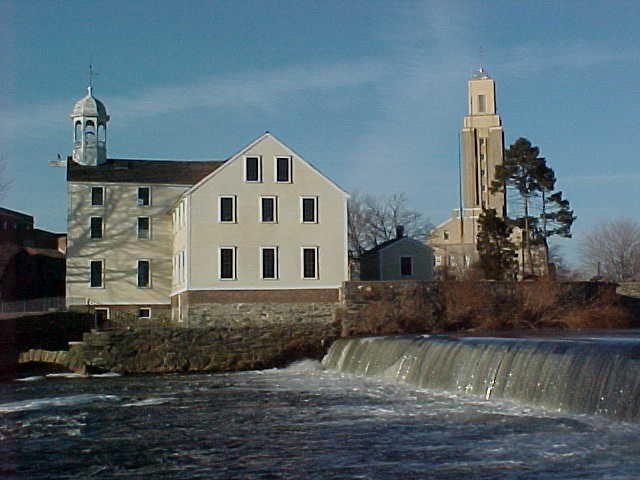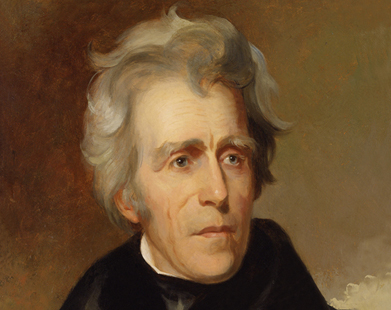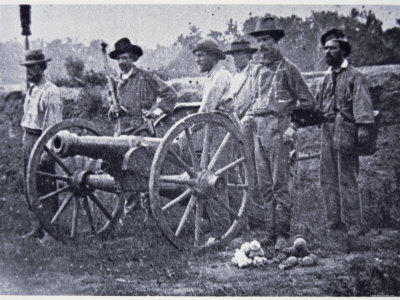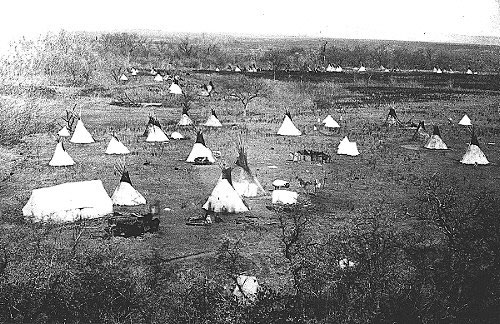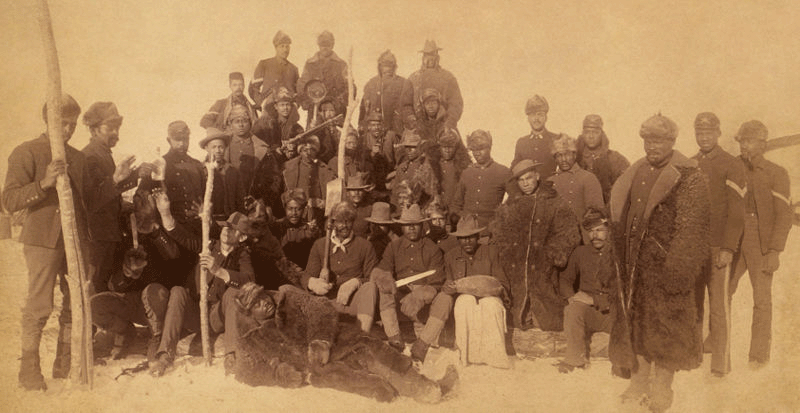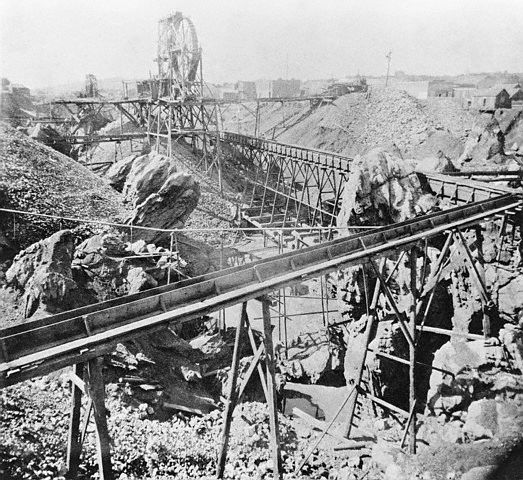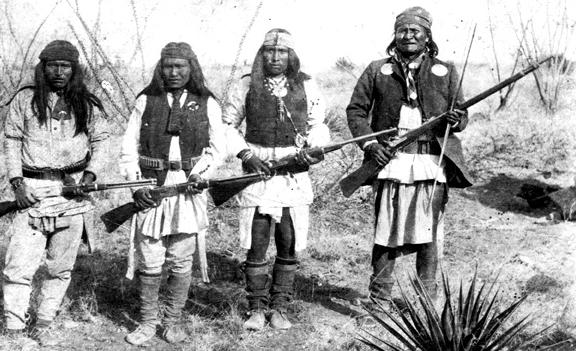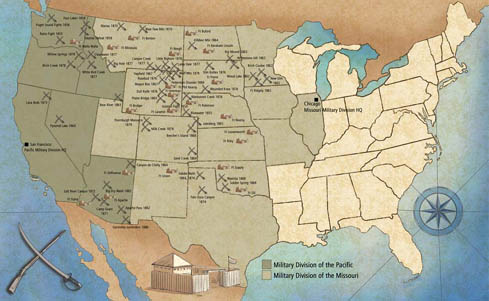A) Lincoln’s Plan – for Lincoln, Reconstruction was more of a wartime expediency than a plan to reunite the Union—many of his proposals had to do more with keeping border states within the Union, or undermining the Confederate war effort, than a plan to integrate African-American slaves into American society.
1) 1863 Proclamation of Amnesty and Reconstruction – if 10% of white males who voted in 1860 took an oath of allegiance to the Constitution and the Union, and swore to uphold the laws dealing with emancipation, they were eligible to receive a Presidential pardon and begin forming a state government.
(a) Provisional governments were formed in Tennessee, Arkansas, and Louisiana under this plan
2) 1864 Wade-Davis Bill – product of small, but influential, group of so-called “Radical Republicans” who demanded a transformation of Southern society. Wade-Davis stipulated that a majority of white males declare their allegiance to the Union, and that only those who could provide proof that they had always remained loyal could vote and serve in the state constitutional conventions. In addition, the conventions themselves would have to abolish slavery, deny political rights to high-ranking civil and military officers of the Confederacy, and repudiate Confederate war debts.
(a) Lincoln opposed this measure, and was able to exercise a “pocket veto” by not signing the bill after Congress had adjourned.
(b) Wade-Davis Manifesto – accused Lincoln of usurping power and of attempting to use the readmitted states to ensure his re-election.
3) Lincoln’s final statement on Reconstruction – wanted no persecution, no revenge, no dramatic restructuring of southern social and economic life; how this would have faired with the Southern political response (the return of so many Confederate political leaders, restrictions placed upon newly-freed African Americans, etc.) no one can truly say; Lincoln’s best feature was his flexibility of response to changing situations.
II) Presidential Reconstruction – Congress was not in session from the time of Confederate surrender and Lincoln’s assassination until the late fall of 1865, so Johnson had a free hand to carry out what he thought Lincoln’s plans were for Reconstruction.
A) Andrew Johnson -- devout Southern Unionist, placed on the ticket with Lincoln in 1864 (when Lincoln ran as an Unionist, rather than on the Republican ticket) in a gesture of bipartisanship. Johnson came to political power in eastern Tennessee, opposing the power of large slave owners. Johnson himself owned slaves, however, and he was an extreme racist.
1) Johnson a strict Constitutionalist – believed that the Constitution was inviolent, and that the Southern states that had attempted to secede needed no Reconstruction, because secession was illegal and therefore these states had never seceded (what to do with the thousands of traitors who had served in the rebel army, however, Johnson never addressed).
(a) 1865 Proclamation of Amnesty – Lincoln proposed that those Southerners who were willing to take an oath of allegiance be granted full citizenship rights (except for officials and officers in the Confederate Army), and that they be allowed to set up local and state governments. Johnson added to this list of people that Lincoln had prohibited those who owned property worth more than $20,000, because Johnson believed these “aristocrats” were the ones responsible for the secession movement in the South.
(b) Southern provisional governments – in Southern states not already organized by Lincoln, Johnson appointed provisional governors authorized to call conventions, which were to invalidate secession ordinances, repudiate Confederate war debts, ratify the 13th amendment, and provide African Americans with limited voting rights.
2) Southern Intransigence – the political leaders of the new southern governments looked much like the political leaders of the Confederacy (including the Vice-President Alexander H. Stephens, four Confederate generals, eight colonels, six cabinet members, and a host of minor officials.
(a) Southern “Black Codes” – passage of laws restricting the freedoms of African Americans, which baldly revealed the intention of southerners in control to retain all of the trappings of slavery, even if the legal status was removed. Prohibited interracial marriages, restrictions were placed upon the property they were allowed to own, and they were required to enter into annual labor contracts, with a provision for punishment in case of violation (including forced labor).
(b) Land and Labor Questions – all Southerners, black and white, knew that how these questions were answered would determine the path that Reconstruction would take.
(i) “Forty Acres and a Mule” – in South Carolina and Georgia, William Tecumseh Sherman issued Field Order #15, which declared that former slaves under his jurisdiction would receive confiscated land, and an army mule to work it. The failure to follow through with this plan led African Americans to have to accept the system of sharecropping. President Johnson forced Sherman to retract this policy. (Relate this topic to the ongoing controversy over reparations for slavery).
(i) Freedmen expectations – because they had created most of the wealth for southern planters, many freedmen expected to receive land as compensation for their labors.
(ii) Promotion of self-sufficiency – by providing freedmen with land, they would be able to become self-sufficient, able to grow their own food.
(ii) Gang labor – resisted by freedmen, because it reminded them of restrictions they had under the slave system.
(i) Required freedmen to sign year-long labor contracts, and provided that those freedmen who could not prove that they had such a contract at the beginning of each year should be arrested, and their labor sold by the government to the highest bidder.
A) Sharecropping – Developed as a sort of compromise between the freedmen and southern planters. Freedpeople were allowed to organize their labor as they wished (usually on the family farm model). Planter retained ownership of the land, and “furnished” sharecroppers with a house, food, and seed (and often times farming implements). Proceeds of the sale of the crop (which the planter completely controlled) were usually split 50/50—after the planter was repaid for his initial investment.
1) Debt peonage – sharecropping devolved into essentially a system of debt peonage, with sharecroppers usually unable to pay back entire debt owed to the planter, with the result that sharecroppers were often restricted to a particular farm—unless they could find another plantation owner willing to pay off their debt in return for working for him.
(a) Obviously, this system was open to abuses by the owning class, who often took advantage of the fact that the freedmen were often illiterate. Too often, this in fact turned into a system of debt peonage, with freed families falling deeper and deeper into debt, with no hope of ever paying it off.
III) Political conflict – the initial high hopes that many (including many members of Congress) held for the leadership that Johnson would provide were dashed as the President to weak or no action against atrocities against freed people in the South – conflict that culminated in Johnson’s impeachment (which like our own recent experience, was an act of more political than criminal import).
A) Andrew Johnson – shared similar upbringing with Lincoln (little formal education, constant striving to better himself), but he lacked Lincoln’s political acumen, and he was bitterly racist (where Lincoln’s racism was more benign).
1) “Punishment for traitors” – initially, Johnson promised severe punishment for officials in the Confederate government, and the “aristocrats” that he felt had led the South into the war at any rate. Johnson soon began granting individual pardons to just these kinds of people, however, which contributed to his falling out with Congress.
(a) Intransigence of southern states – many of the early governments formed in the South incorporated leaders who had been active in the rebellious governments, and none of these early governments made any steps toward guaranteeing rights of any kind for freed people (parallels between this and the “massive resistance” that white southerners demonstrated during the civil rights movement—“the Second Reconstruction”)
(b) Presidential pardons – despite Johnson’s rhetoric, he granted (eventually) hundreds of presidential pardons, many to the very people he vilified months before as aristocrats.
2) Repudiation of secession and debt – for Johnson, this ended the secession crisis, when the former Confederate States repudiated the debts incurred during the Civil War (refused to pay them, which punished those creditors who loaned the governments money), and the states who attempted to secede agreed that secession was not a right states had.
IV) Rising influence of the Radicals
A) Defense of African American civil rights – the imposition of the so-called “Black Codes” demonstrated to many Republicans that more would have to be done to “reconstruct” southern society than simply end slavery.
B) Refusal to seat southern delegates – in January of 1866, the final act of the sitting Congress was to refuse seats to the newly-elected southern representatives; this marks the beginning of Radical Reconstruction.
V) Congress sets policies – Radical Reconstruction was fueled by Southern intransigence and Johnson’s policies in response to this Southern action; driven in part by a desire to punish the Southern rebels, and on the part of most Radical Republicans, a genuine concern to protect the rights of freed people.
B) Passage of the 13th Amendment, ending Slavery in the United States. Passed by Congress 31 January, 1865; ratified by the states by December 6, 1865.
C) December 1865 -- Republican moderates joined with Radicals in refusing to seat southern congressional delegations, in response to the institutions of Black Codes and the fact that former leaders of the Confederacy were leading these delegations.
D) Civil Rights Act (April 1866) – the first law enacted over a presidential veto. Ensure the rights of freedpeople against the passage of the Black Codes (while the will to enforce it remained).
E) June 13, 1866 – Congress passes 14th Amendment, which granted citizenship to freedmen (to this point, citizenship had been restricted whites (since 1790).
F) July 1866 – Freedman’s Bureau Act extended, again over Presidential veto.
G) Transformation of state politics
1) Establishment of public schools
2) Banned discrimination in public accommodations
3) Lien laws – which gave workers first claim on farmer’s crops in case of a farmer’s bankruptcy.
II) 1866 Congressional Elections – Johnson campaigned throughout the Midwest (where he was heckled mercilessly) for Democratic Party candidates; instead, Congress was returned with an even larger Republican majority; all involved saw this election as a referendum on the course that Reconstruction was taking.
A) Reconstruction Act (March 1867) – law was again passed over Johnson’s veto, as a result of the Republican mandate.
1) Divided the former Confederacy into five military districts
2) Each state was required to hold constitutional conventions; military protection to ensure participation of freedmen.
(a) Freedmen responded in overwhelming numbers, and overwhelmingly voted for the party of Lincoln.
III) Society in the (Temporary) New South
A) African Americans in Southern politics – except for South Carolina (which had a population of greater than 50% black), Louisiana, Florida, and Virginia, no other state constitutional convention had more than 20% representation of African Americans; however, that participation of any blacks in the political process was something new.
1) African American leader – many of these new political leaders gained leadership experience while serving in the US army; others had served as ministers to slaves on plantations.
2) Establishment of the Black Church – the church became the backbone of African American society after the Civil War, and allowed many black to develop leadership skills.
3) Myth of African American incompetence – much was made at the time of the lack of education of blacks, and their general incompetence while in office; this has been greatly exaggerated.
(a) Much of government, at all levels, was spectacularly corrupt during this time period (in comparison to present-day). Both major parties took it to heart that “to the victors belong the spoils,” and corruption and graft greased the wheels for both parties. Although much has been made of the corruption of state and local governments in the South during the rule of “Black Republicans,” corruption was endemic in many Democratic party machines in the north during this time period as well (the Tweed Ring, etc.)
B) Carpetbaggers and Scalawags -- two terms used to describe white collaborators with blacks. Carpetbaggers were northern whites who moved south; Scalawags were native southern whites. For a number of years, the misdeeds of blacks involved in the political process and their white collaborators was given the lion’s share of attention by historians (most of whom happened to grow up in the South under the influence of the mythical “Lost Cause”); again, while there were a number of corrupt governmental officials in the South who used their political position to feather their own nest egg, the proportion of corrupt officials was probably no greater in the South than it was in the North.
1) Carpetbaggers – northern whites who moved south, often to set up businesses, or attempt to run plantations with hired freed workers in place of slaves. Many carpetbaggers turned to politics with the Republican Party in the South when their business ventures failed.
2) Scalawags – native southern whites who “collaborated” with freed people and carpetbaggers, and who often joined the Republican Party. Scalawags often became pariahs to other southern whites; if they were involved in business, this often meant that the business failed.
(a) Both carpetbaggers and scalawags were ostracized by the rest of white southern society; often their businesses would be boycotted by southern whites, which guaranteed their failure. Failure in business often led these carpetbaggers and scalawags into politics in the South, but they were completely reliant upon the Republican Party in the north staying interested in their cause, because it was impossible to make inroads with most southern whites in most areas.
C) Radical Republican Record
1) Universal manhood suffrage.
(a) Women, who had long agitated for universal suffrage (voting for all people, no matter race or gender), split with the abolitionist movement, to which they had contributed so much, over this issue.
2) Reapportionment of legislatures to more closely approximate population, rather than the old system prevalent in the South which gave greater voice to those who owned great amounts of property (see Standing at Armageddon).
3) Public Schools – in most of the South, Reconstruction governments established the first public schools
4) Improvement in infrastructure -- Reconstruction governments in the South improved roads, bridges; also funded the construction of railroads (most of which only benefited a few people).
(a) This was also the method of constructing railroads in the North during this time period, which often meant that when more stock was issued than the railroad could cover with the value of its assets (known as “watered” stock), taxpayers often were subsidizing railroad stock holders.
5) Promise of equality before the law for African Americans – for as long as the Republican Party felt like enforcing it.
1) Ku Klux Klan - began as social club; transformed by Nathan Bedford Forrest into paramilitary force of a resurgent Democratic party in the South, to intimidate (or eliminate) African Americans, carpetbaggers, and scalawags.
(a) Ku Klux Klan Act – passed by Congress to eliminate actions by KKK, which it effectively did
(b) Martial law – U.S. Grant declared martial law in 1871 in South Carolina, North Carolina, and Mississippi
2) Rise of the Democratic Party – in 1869, Tennessee and Virginia returned to Democratic Party control; by 1876, only Louisiana, Georgia, and South Carolina remained under nominal Republican Party control.
(a) “Redeeming” the South – the self-proclaimed “Redeemers” of the South, white male members of the Democratic Party, proclaimed that they would return the region to the “good” government (meaning no services, but low taxes) that southerners had “enjoyed” before the war.
(b) The “Redeemed” South, of course, had little place for African Americans in politics; African Americans did not disappear completely from southern politics for another two decades, but their influence was virtually non-existent in the Democratic South.
(i) Some “redeemed” areas, however, did revert back to Republican control briefly during this time period, but within a year or so that condition would be changed.
3) Panic of 1873 – the worst financial crisis in the country’s history to that time diverted much of the attention that remained devoted to protecting the rights of freedpeople in the South.
(a) Rise in tax rates – taxation in the South had traditionally been very low—because the state offered few services to its people. The financial panic, combined with the higher taxes and corruption that existed in state and local governments, enabled Democratic politicians to link the three conditions in the minds of voters; this was combined with intimidation and violence at election time, as well as with the beginning of the disenfranchisement of African Americans to allow the party to assume control—which it held until the disenchantment with the Party over its advocacy of civil rights led most white politicians into the Republican Party in the late 1970s and 1980s.
IV) The Lingering Death of Reconstruction
A) 1868 Election – the election of Republican presidential candidate U.S. Grant and the return of the Republican majority in both houses of Congress ironically spelled the end of the influence of the Radical Republicans. While legislation of benefit to the freedmen continued to be passed (for example, the 15th Amendment), the will to see that these laws were actually implemented by the states was no longer there.
1) 15th Amendment – ensured freedmen the right to vote
2) Spectacular corruption of the Grant Administration – although Grant made a great military leader, his reliance upon corrupt associates undermined his effectiveness as a political leader.
B) 1876 Election controversy – The race between Samuel Tilden (Dem from New York) and Rutherford B. Hayes was extremely close; Tilden won the popular vote, and led in votes in the Electoral College, but didn’t have enough votes to win; vote totals from Louisiana, South Carolina, and Florida were in dispute, because there were allegations of fraud, and voter intimidation by Democratic Party partisans.
Rumored Southern Democratic deal – Many historians have believed that southern Democrats cut a deal with Republicans, that they would not contest making Hayes president in return for the withdrawal of the remaining troops, and accept “in good faith” the 13th, 14th, and 15th Amendments. In truth, Southern Democrats did all they could to obstruct making Hayes president, but with both houses of Congress, the presidency, and the Supreme Court still in the hands of Republicans (even though the Democrats had won control of the House in the election, they would not be sworn in until the next session of Congress), there was in reality little they could do about it.

